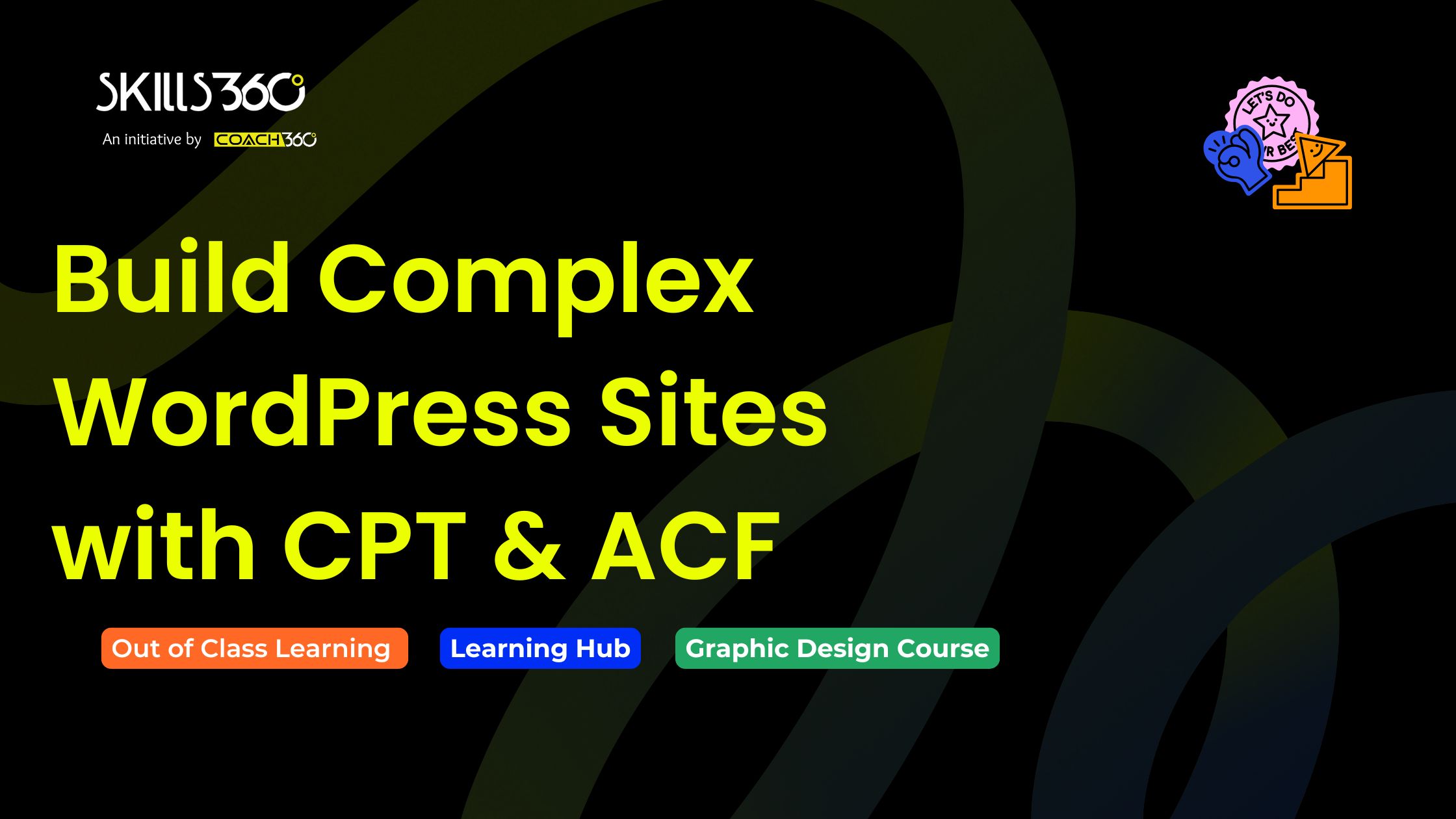- Featured article
- People at Skills360 04 - Aug 2025 | 10 min read

Although WordPress is well-known for being a platform for bloggers and small websites, it is capable of much more than just posts and pages. Without writing a single line of PHP or JavaScript, it can power intricate, dynamic websites with the correct tools and methodology. Advanced Custom Fields (ACF) and Custom Post Types (CPTs) are two of the most potent features that make this possible. Together, they give you the ability to organize and present highly customized content while maintaining the manageability, scalability, and ease of editing of your website.
With our advanced WordPress training in Karachi, we at Skills360 teach students how to become proficient with these tools so they can build websites of a high caliber for clients, agencies, or personal projects. This goes beyond simply installing plugins; it involves comprehending WordPress' architecture and making the most of it.
WordPress provides you with two content types by default: pages and posts. These might be sufficient for blogs and basic business websites. However, you soon realize the limitations when you begin creating websites for more specialized purposes, such as a directory, a portfolio, an events calendar, or a real estate listing platform.
The answer is Custom Post Types. They enable the creation of completely new content categories that function similarly to posts but have the ability to store and present various kinds of data. For instance, you may have CPTs named "Events," "Properties," or "Team Members," each of which has a separate editing screen in the WordPress dashboard. For site owners, this division greatly simplifies editing and keeps content organized.
In essence, a Custom Post Type is an altered version of the "post" type that comes with WordPress by default. Pages are merely a particular kind of post, but technically, WordPress treats all content as posts. With CPTs, you can create your own content category with custom fields, templates, and settings.
In the past, developers would use PHP code in the functions.php file of a theme to register CPTs. However, you can accomplish this without interacting with code thanks to tools like Custom Post Type UI. We guide students through both the manual and no-code approaches in our advanced WordPress training in Karachi so they can select the one that works best for their project.
Advanced Custom Fields specify what information you can store for that content, whereas CPTs specify the type of content you have. With the help of the ACF plugin, you can add custom fields to any kind of post, page, or user profile, including text boxes, dropdown menus, date pickers, image uploads, and more.
Consider developing a "Property" CPT for a website that deals with real estate. Price, number of bedrooms, location map, gallery photos, and other fields can be added by ACF. This turns an empty post editor into a well-structured form that is simple to use and difficult to abuse. It guarantees consistent data entry, which is essential for clean front-end display.
CPTs and ACF are strong when used alone. When combined, they make it possible to create highly customized websites that are still simple to maintain. This is the reason:
1. Structured Data: You have complete control over the data that is entered and stored. This improves SEO and makes the front-end display cleaner.
2. Better Backend User Experience: Content editors can see the fields they need without being distracted. No more stuffing the main text box with irrelevant details.
3. Scalability: It's easy to add new fields or types of content as a website expands. It is therefore perfect for long-term initiatives or developing companies.
4. No Coding Needed: With a little setup, you can get developer-level results without knowing PHP. This makes it ideal for content managers, designers, and novices hoping to work in the industry.
We lead students through real-world situations in our classes where CPTs and ACF excel. An example would be an events website with custom fields for date, time, venue, ticket price, and booking link for each type of event post. Another is a school website with distinct CPTs for teachers, courses, and testimonials, each with customized input fields.
Whether it's a sortable staff directory, a map of event locations, or a grid of products with prices, we also teach how to create front-end templates for visually representing this data. By the end of the module, students are able to style CPTs and ACF using page builders or theme templates in addition to knowing how to set them up.
Better SEO is also supported by the use of CPTs and ACF. Search engines can better comprehend your content when it is structured, which aids in ranking for particular queries. For instance, Google will recognize "cook time" and "ingredients" as separate pieces of information rather than just text in a paragraph if you manage a recipe website. Rich snippets may appear in search results as a result.
By avoiding overcrowding your primary post type with irrelevant plugins or page builder elements, performance is also enhanced. The editing and loading process speeds up and eliminates needless bloat when each post type has only the fields it requires.
We walk students through a methodical process in our advanced WordPress training in Karachi at Skills360:
Students who practice these steps in a controlled setting are more confident when they apply them to real-world projects, whether they are for clients, employers, or their own businesses.
One myth is that "real" development is skipped when using plugins like CPT UI or ACF. Actually, knowing when and how to use these tools is a skill in and of itself. In our training, we place a strong emphasis on knowing why you're making each decision rather than just clicking through settings.
This kind of critical thinking guarantees that you can confidently tackle problems that come up, such as integrating with a page builder, resolving a display issue, or optimizing for speed.
We go over related ideas like taxonomies, conditional logic for field display, and integration with third-party tools after students are at ease using CPTs and ACF. With these abilities, you can expand WordPress's functionality beyond blogging to include full-fledged content management for practically any kind of project or business.
Learning how to use these tools can help you stand out from others who are only familiar with posts and pages if you want to work in web development. Employers and clients appreciate someone who can create unique solutions without always requiring a developer to write intricate code.
Among the most useful features for creating intricate, dynamic WordPress websites without writing a single line of code are Custom Post Types and Advanced Custom Fields. They provide you the ability to organize information logically, present it artistically, and handle it effectively. Our advanced WordPress training in Karachi at Skills360 provides learners with practical instruction, real-world examples, and expert techniques to become proficient with these tools.
ACF and CPTs open up a whole new world of possibilities for designers who want more control over the structure of their sites, content managers who want to optimize workflows, and aspiring developers who want to provide more potent solutions. And with the correct instruction, you can use them to build websites that are not only useful but also genuinely remarkable.


Get curated emails on out of class learning and work on your skills on your free time.